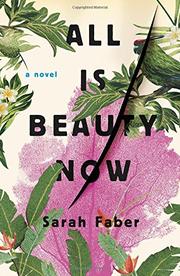Birdcage Walk Helen Dunmore (2017)
Another historical novel, another tiny slice of insight into ordinary lives lived in extraordinary times!
With Birdcage Walk, it’s the year 1792 in Bristol, England. Revolution is encroaching on the British—first the American Revolution, across the Atlantic, and then the French Revolution, right across the Channel. If you’re a British real estate developer in the high-end market, you watch these international events closely, since your investors will be wary if the nation’s resources are being diverted to war. John Diner Tredevant is such a developer, overseeing the building of a terrace of large, elegant homes with spectacular views, on a cliff overlooking the River Avon. He’s borrowed heavily to finance this venture, and as the novel opens, the project is moving along slowly, with most of the homes only shells.
We meet Tredevant through the first-person narration of his wife, whom he calls Lizzie. Lizzie grew up as Elizabeth Fawkes in a family of radicals who advocate change in the political order to alleviate poverty and inequality. Her mother, Julia Fawkes, is especially prolific in writing pamphlets and other ephemeral materials for this cause. Lizzie is very close to her mother, but she’s not as obsessed with social change. In fact, she ignores the advice of her mother and stepfather, Augustus Gleeson, in marrying Tredevant, the consummate capitalist.
Novelist Helen Dunmore depicts Tredevant with subtle skill. He’s been married once before, and the death of his first wife is mysterious. He’s anxious and impulsive, seeming to be always on the edge of violence. This threat of brutality from Tredevant hangs at the edge of every page of the novel, intensifying as reports from the French Revolution become more and more bloody. The effect of major world events on individuals in small cities far from the action is certainly one of the themes of Birdcage Walk. Another theme is the evanescence of much of the writing of movements on the margins of society, particularly the writing of women. Not only has the writing disappeared, but the thoughts of these activists can no longer be captured except by novelists who make conjectures about the words that they might have spoken.
These themes are made more poignant by the fact that Helen Dunmore, who died in 2017, was terminally ill when she wrote Birdcage Walk, her sixteenth novel, though she did not know her diagnosis until the book was nearly finished. (Significantly, the title of the novel refers to a pathway through a cemetery in Bristol.) The notion that individuals might achieve some form of immortality through their creative work pervades Dunmore’s writing. John Diner Tredevant wants to leave behind well-designed houses that will last for centuries. Julia Fawkes and Augustus Gleeson want to reform society or at least to leave writings that will spur later generations to reform. Lizzie seems to want to leave a legacy in the children she raises. What does Helen Dunmore want to leave? Will any of these attempts at immortality be successful?
Shakespeare’s “Sonnet 55” is probably the best statement of the conundrum:
Not marble nor the gilded monuments
Of princes shall outlive this powerful rhyme,
But you shall shine more bright in these contents
Than unswept stone besmeared with sluttish time.
When wasteful war shall statues overturn,
And broils root out the work of masonry,
Nor Mars his sword nor war’s quick fire shall burn
The living record of your memory.
’Gainst death and all-oblivious enmity
Shall you pace forth; your praise shall still find room
Even in the eyes of all posterity
That wear this world out to the ending doom.
So, till the Judgement that yourself arise,
You live in this, and dwell in lovers’ eyes.
Buildings won’t last, statues won’t last, even great poetry won’t last. But love—that will always be expressed in the eyes of lovers.
























